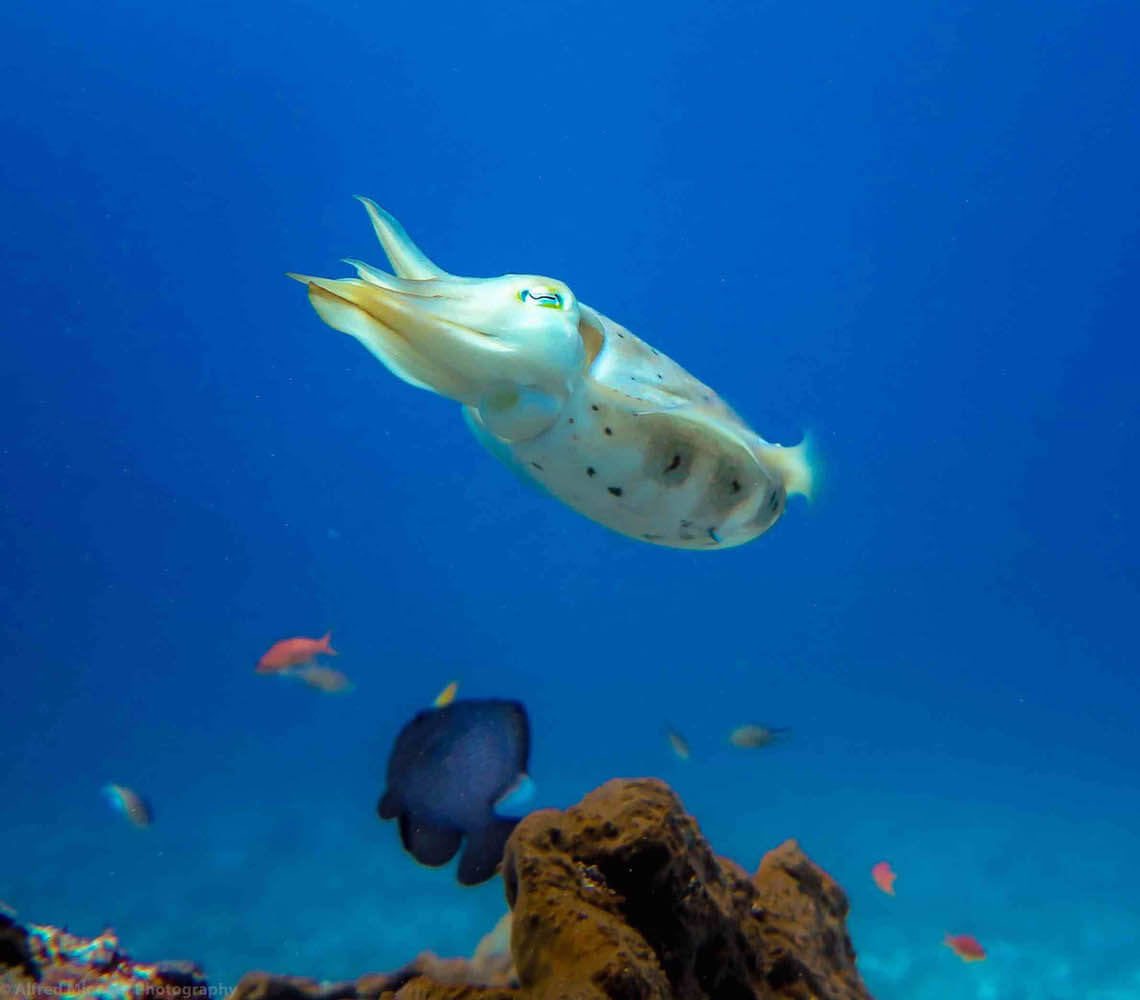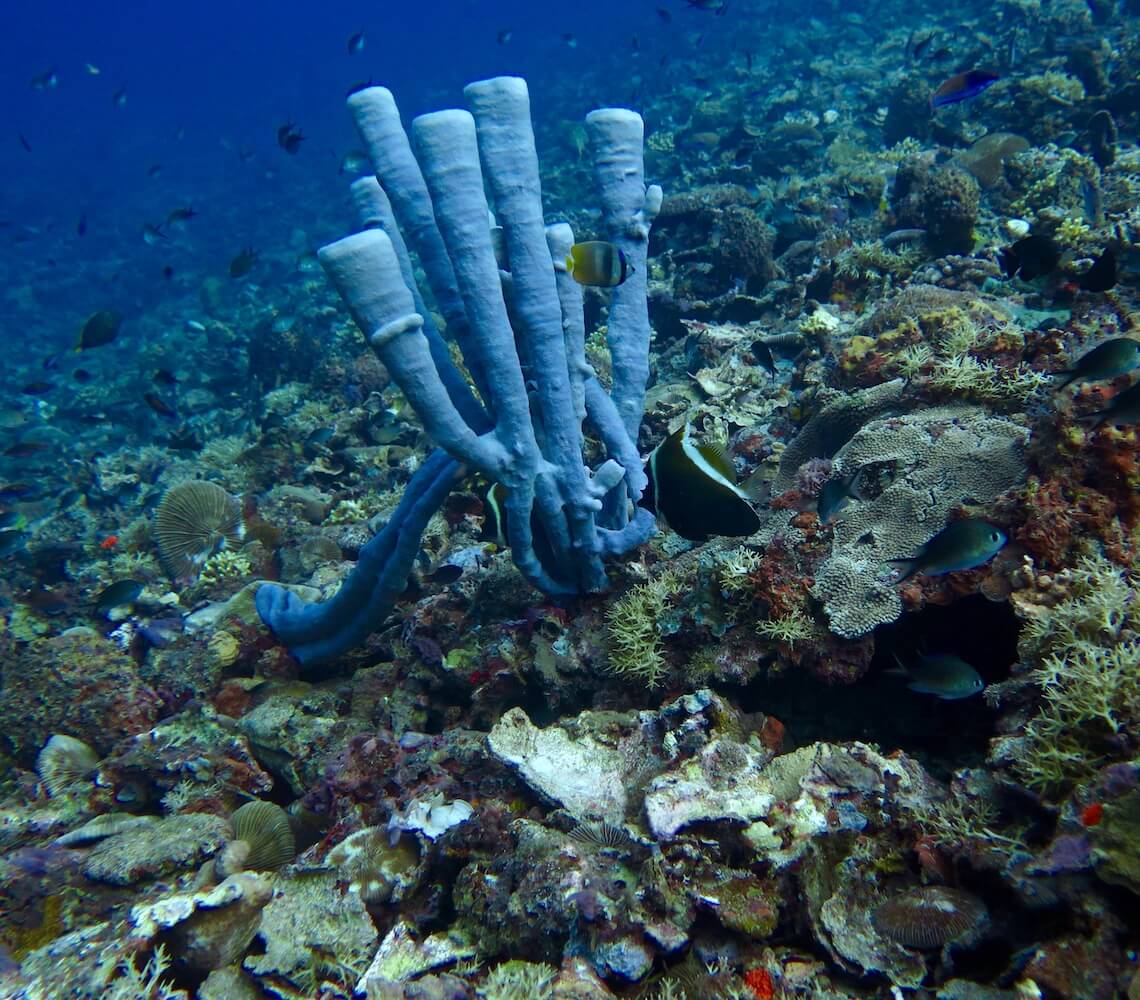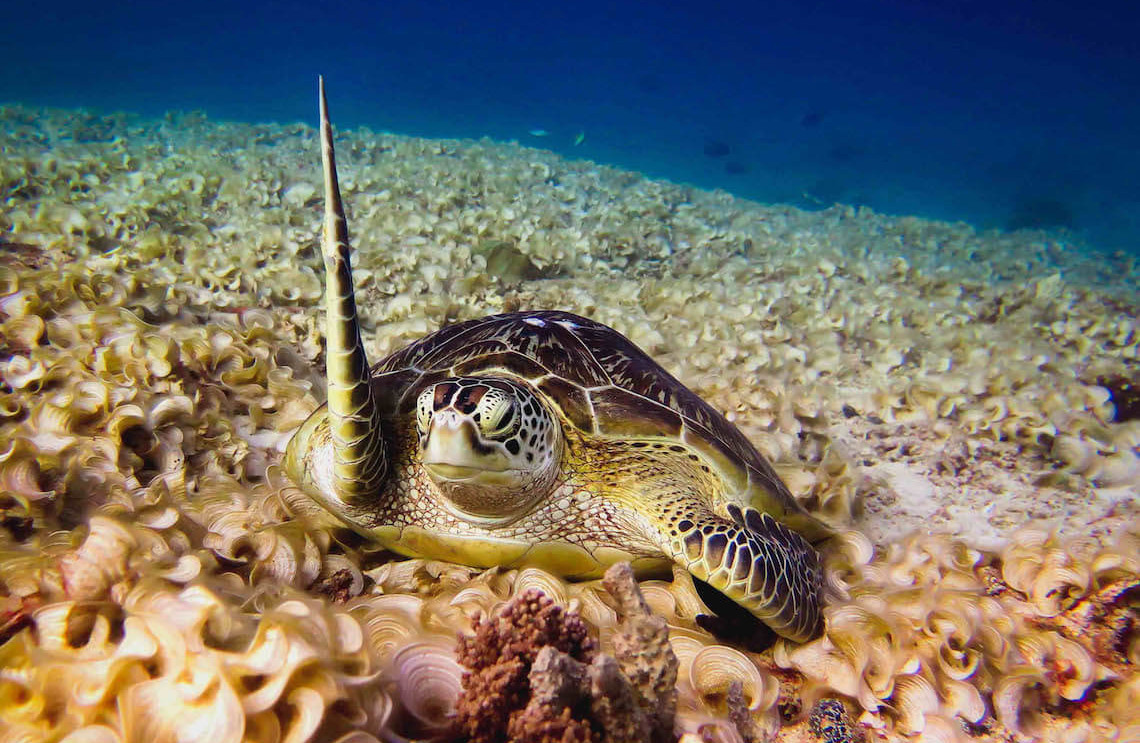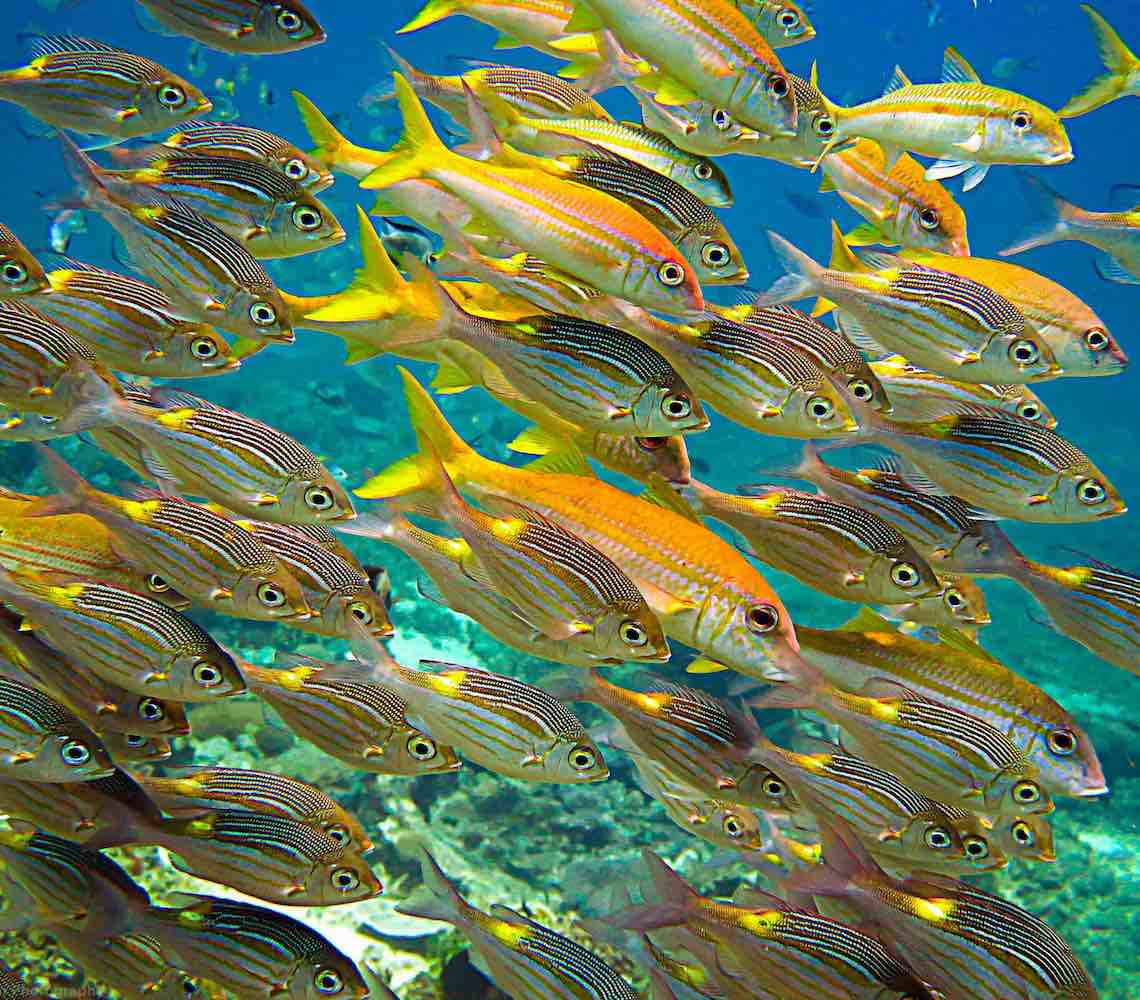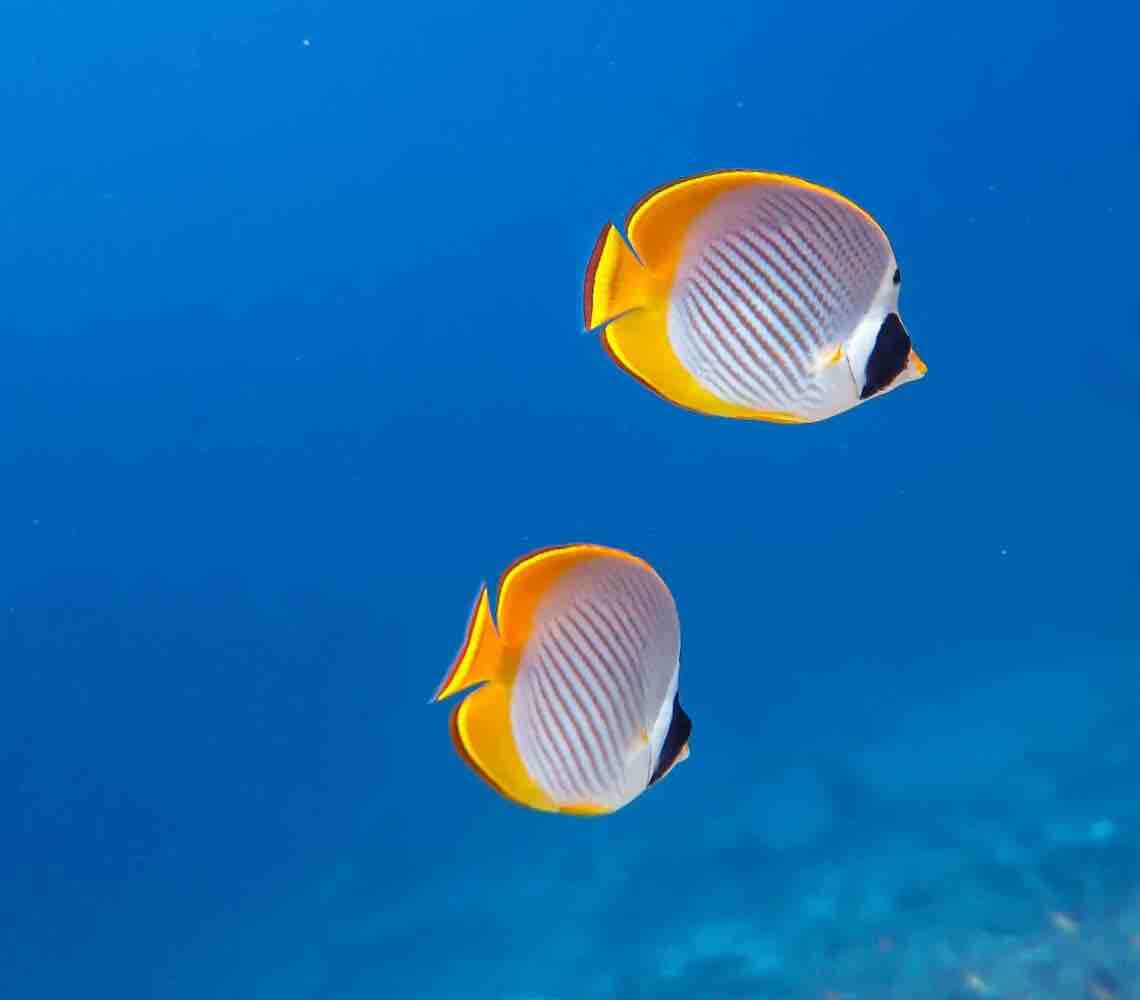the dive sites of the gilis
This is a steeply sloping reef with a near vertical top section. The reef starts at around 5 meters depth and drops to a sandy bottom at around 22m. Soft corals grow all along the reef. Before and after the wall there are a lot of smaller heads of stony coral, including cabbage, brain, star and lots of anemones. Groupers and sweetlips hang out at the bottom of the wall together with snappers, angelfish, all types of butterfly, clown and parrotfish. In the section between the two parts of the wall, there is a good chance of seeing turtles, mostly hawksbill. The wall itself is a good place to spot moray eels and lionfish that seek shelter in the crevices. The dive site is also perfect for night diving when you can find all sorts of crustaceans, crabs, lobster and a variety of reef shrimps. If you are very lucky, you might come across a beautiful spanish dancer showing off its colours.
Avg Depth: 14m
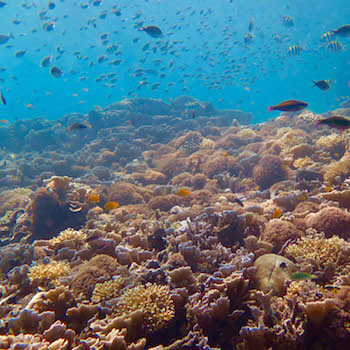
The wreck is not a true shipwreck but a collapsed pier structure and has become a favourite among divers. The pier sank sometime around 2003 and has been overtaken by hard and soft corals in the time since. All sorts of fish find shelter around the structure including stone and scorpionfish, a resident school of drummers, damselfish and sometimes you might even spot a frogfish. Your entry point will be north of the dive site on the slope of Gili Meno where it is likely to find the turtles that make these islands famous. A little to the west of the wreck is a large coral head which is surrounded by swarming glassfish. It is an ideal site to take your camera and check out every corner and crevice. You will be surprised at what you may find.
AVG. DEPTH: 12M

This is one of our most popular dive sites because of its variety of wildlife. Shark Point begins at Andy’s reef and then slopes down past 20m. In this deep section, the dive site lives up to its name. Here you are most likely to find whitetip and blacktip reef sharks. Between the ridges and valleys, you will see the sharks resting along the bottom but as soon as you come too close they will swim away. In this area, there is an impressive variety of other marine life such as trevally, barracuda, snapper and blue spotted stingrays. Especially when the currents are strong, this dive site teems with life and the dive can become an adrenaline rush.
AVG. DEPTH: 15/22M
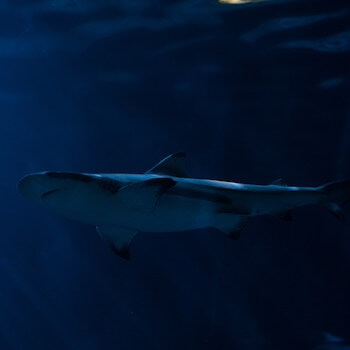
A little off of the north coast of Gili Meno you will find this amazing reef. As on Deep Turbo and Takat Malang this site consists of a series of seamounts rising up from about 35m. There are 8 major “takats” arranged roughly in a figure of eight and abundant with all sorts of coral variations. The average depth at this dive is around 25m which makes it perfect for nitrox divers. The coral variety is superb, with most types of stony coral well represented as well as a good deal of soft corals. You have a good chance of finding the well camouflaged pygmy seahorse in some of the gorgonian fans. There are numerous schools of fish around, especially when the currents are strong.
AVG. DEPTH: 25M
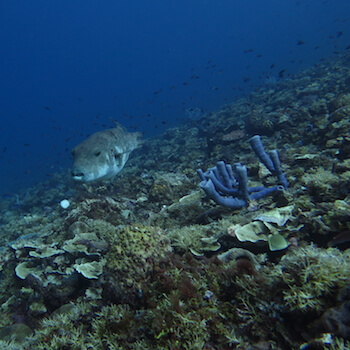
Being close to Simon’s reef, this dive site is quite similar in many respects. Again this site consists of big coral heads (takats) where the shallowest has a depth of about 15m. There are about 10 of these takats, each sculpted with overhangs, outcrops and swim throughs – as if someone has been at work on the reef with a giant carving chisel. There are a great variety of hard and soft corals all over the major takats. Massive gorgonian fans hang off the walls to catch the nutrients passing by. The channels between the takats are great to cruise around and take in the beautiful topography. The dive site is excellent for multilevel dives where at the end of the dive it is possible to see some resident cuttlefish.
AVG DEPTH: 20M
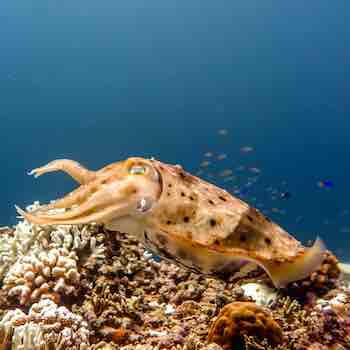
This is one of the few coral walls around the Gilis. The entry point is usually at the north end of the wall and the prevailing current usually moves south. Coral growth starts in the shallows, sloping down to about 8m with heads of brain and star corals and some Acropora formations. During the second part of the dive, you will find the wall drops steeply down to about 28m. There are overhangs and arches along the wall filled with glassfish, moray eels, anemones with clownfish and sometimes octopus. It’s great to cruise around at about 15m, looking down and experiencing the feeling of flying like a bird. Several species of reef fish can be found including six-banded angelfish, lionfish, a variety of triggerfish, sweetlips and damselfish. Towards the end in the shallows, it is likely to bump into a feeding hawksbill turtle.
AVG DEPTH: 18M
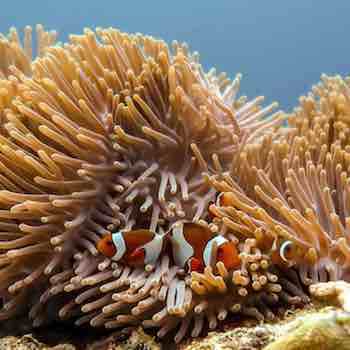
Located on the southern end of Gili Trawangan, this is a gently sloping down reef. In the shallows, rocky terrain and giant table corals (Acropora) give shelter to the marine life. The midsection is covered in healthy staghorn corals with isolated hard coral outcrops. This is where you find schools of two-dot snapper, sweetlips, damselfish and different variations of anthias. At around 18m the coral end and the sandy area emerges. This is where you are most likely to find whitetip reef sharks that are resting on the sand. When rainy season kicks in (December to March) and you have a little bit of luck, manta ray encounters are most likely to happen on this dive site because of an abundance of nutrients.
AVG DEPTH: 15M
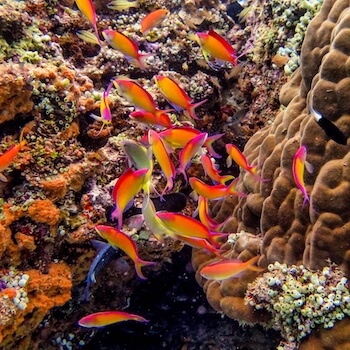
Halik reef caters to all levels of divers. Beautiful coral formations are found in the shallows and along the reef, coral bommies and gorgonian fans. This is a perfect drift dive with an amazing variety of fish life. You will find lionfish, moray eels, big groupers and clownfish. Around full moon, massive bumphead parrotfish feed in schools on the hard corals, leaving a cloud of dust behind them. Green and hawksbill turtles are commonly found feeding on the reef. The more experienced divers will be dropped on to Deep Halik, a series of coral ridges and canyons all the way down to almost 40m. The corals here are pristine and reef sharks, eagle rays and giant trevally are commonly seen.
AVG DEPTH: 15/30M

This is a huge dive site and one of the pearls of the Gilis. The shallow area lies around the north east coast of Gili Trawangan where water is being pushed up from the deep. Massive schools of redtooth triggerfish and fusiliers swim into the current to feed. In this area, you can find scorpionfish waiting for an opportunity to feed, moray eels and lionfish hiding between the rocks. The more experienced diver will dive the deeper section which is situated a little off of the coast of Gili Trawangan. Here there are a series of hills and valleys where the shallowest part is about 16m dropping down to about 32m. Huge sea fans and other interesting coral formations will fascinate you from start to finish. Sometimes you can spot a leopard shark along with white tip and black tip reef sharks. The majority of the dive is around 20-30m which makes it excellent for nitrox certified divers. Deep Turbo has always been a favourite where exploring the reef and its marine life gives you a truly fascinating dive.
AVG DEPTH: 22M
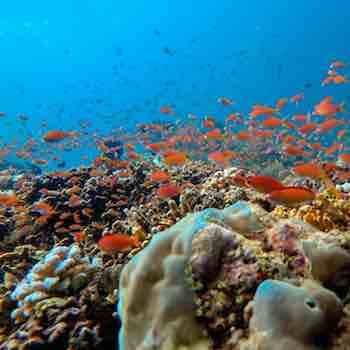
Han’s reef is situated on the north tip of Gili Air and consists of various sized coral bommies and rocky outcrops scattered over a sandy bottom. The dives site is suitable for all diver levels. Especially when you’re interested in the macro marine life you will have a fascinating experience. Cruising around the rocks you are likely to find scorpionfish, lionfish, different nudibranchs, pipefish, moray eels and maybe the odd frogfish. In the sandy patches, there are loads of garden eels, stingrays, flying gurnards and flounders.
AVG DEPTH: 12M

This is next to Blue Marlin Gili Trawangan and offers a great variety of wildlife. We are proud to have biggest Bio Rock project in the world around the Gilis. Biorocks are structures made out of the steel bars that have been bent and welded into any kind of shape. The steel structure is attached to a battery which gives it an electrical current. Because of this current limestone will settle on the steel bars and will form a skeleton for coral to grow on. Broken corals are attached to the structure. The electrical current stimulates coral growth and the corals start growing 5 times faster than normal. The biorocks provide shelter for all kinds of reef fish such as lionfish, sweetlips, batfish, trumpetfish and pufferfish. It is superb for divers that are interested in macro diving.
AVG DEPTH: 15M
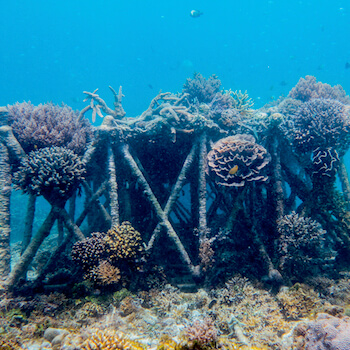
This site is located between Gili Meno and Gili Air. Normally there is a north to south current which makes this site ideal for drift diving. As the reef begins at 12 metres, this site is ideal for already certified divers. There is an abundance of bright and colourful table corals which form a stunning slope from 12 to 35 metres. Due to the vast amount of corals present, there is plenty of marine life including stingrays, triggerfish, clownfish, angelfish and pipefish.
AVG DEPTH: 15M






